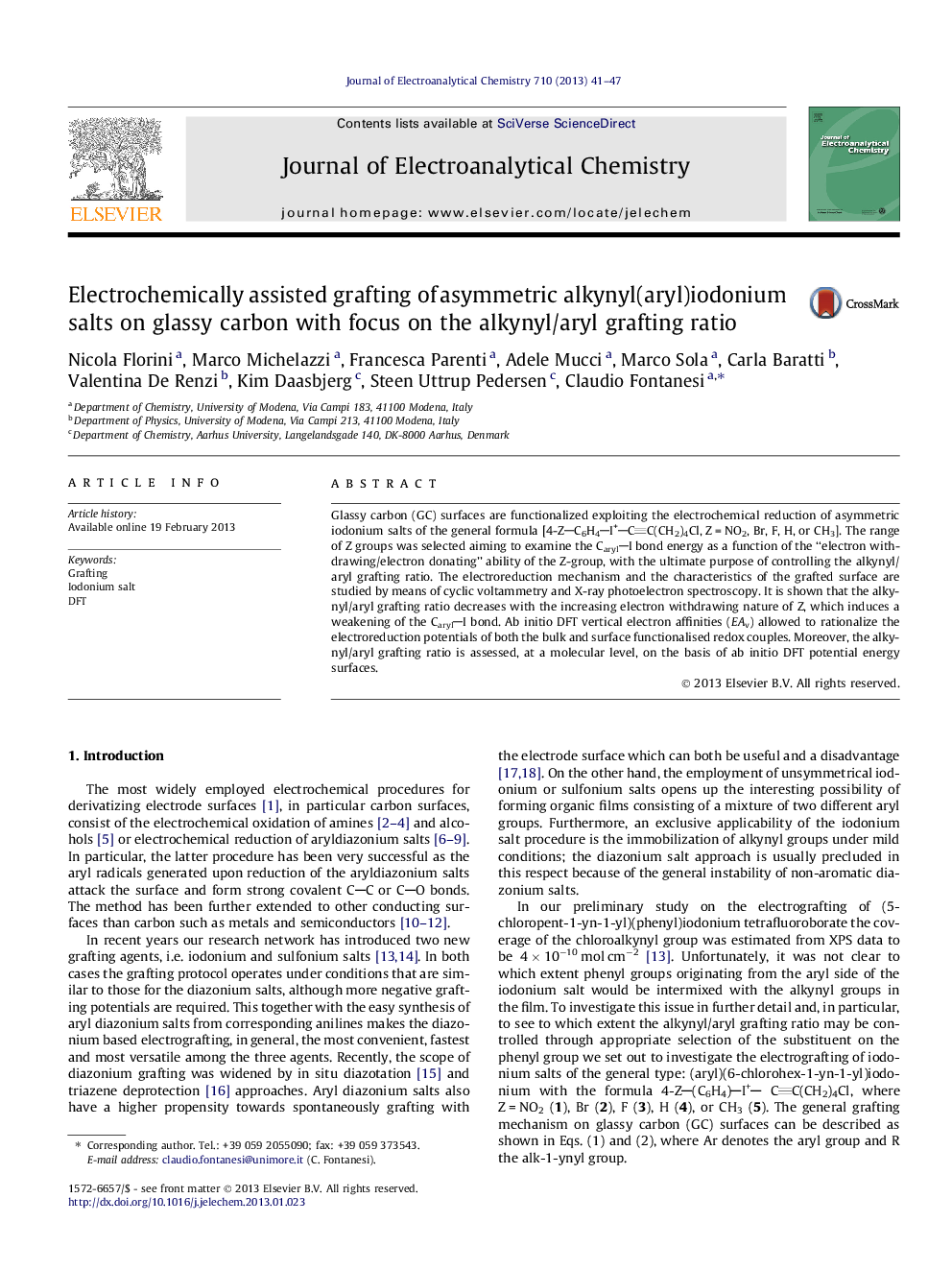| Article ID | Journal | Published Year | Pages | File Type |
|---|---|---|---|---|
| 218929 | Journal of Electroanalytical Chemistry | 2013 | 7 Pages |
Glassy carbon (GC) surfaces are functionalized exploiting the electrochemical reduction of asymmetric iodonium salts of the general formula [4-ZC6H4I+CC(CH2)4Cl, Z = NO2, Br, F, H, or CH3]. The range of Z groups was selected aiming to examine the CarylI bond energy as a function of the “electron withdrawing/electron donating” ability of the Z-group, with the ultimate purpose of controlling the alkynyl/aryl grafting ratio. The electroreduction mechanism and the characteristics of the grafted surface are studied by means of cyclic voltammetry and X-ray photoelectron spectroscopy. It is shown that the alkynyl/aryl grafting ratio decreases with the increasing electron withdrawing nature of Z, which induces a weakening of the CarylI bond. Ab initio DFT vertical electron affinities (EAv) allowed to rationalize the electroreduction potentials of both the bulk and surface functionalised redox couples. Moreover, the alkynyl/aryl grafting ratio is assessed, at a molecular level, on the basis of ab initio DFT potential energy surfaces.
► Glassy carbon is grafted using asymmetric iodoniums salts. ► Substituents with different “electron withdrawing/donating” abilities are selected. ► DFT data are used to assess the electrochemical reduction and grafting mechanism.
